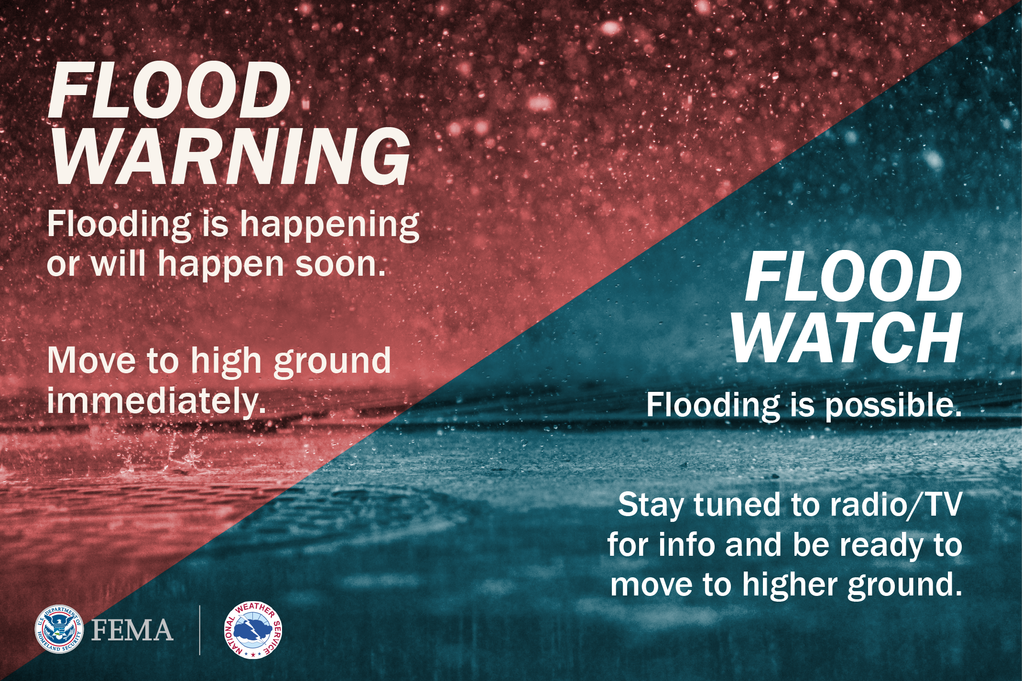How To Interpret Flood Alerts And Stay Safe

Table of Contents
Understanding Different Flood Alert Levels
Understanding the different levels of flood alerts is the first step in effective flood preparedness. Knowing the difference between a flood watch and a flood warning can mean the difference between being prepared and facing a life-threatening emergency. Key terms to understand include flood watch, flood warning, flood advisory, and flash flood warning. These alerts indicate varying levels of flood risk and require different responses.
-
Flood Watch: A flood watch signifies that conditions are favorable for flooding. This isn't a cause for immediate panic, but it's a strong signal to monitor the situation closely. Pay attention to weather reports, and prepare your emergency kit and review your family’s evacuation plan. This is the time to make sure your sump pump is working and that you've moved valuable items to higher ground.
-
Flood Warning: A flood warning means flooding is happening or is about to happen. This is a serious alert requiring immediate action. You should already have your emergency kit ready. If you're in a flood-prone area, it's time to evacuate according to your pre-planned route.
-
Flood Advisory: A flood advisory indicates that minor flooding is occurring or is expected. While the risk is lower than a warning, you should still exercise caution. Avoid driving through flooded areas, and monitor the situation closely.
-
Flash Flood Warning: This is the most serious alert. A flash flood warning indicates a sudden and dangerous flood is happening or will happen very soon. You must seek higher ground immediately. Do not attempt to drive through floodwaters, as they may be deeper and faster moving than they appear.
| Alert Level | Description | Action |
|---|---|---|
| Flood Watch | Conditions are favorable for flooding. | Monitor conditions, prepare emergency kit, review evacuation plan. |
| Flood Warning | Flooding is occurring or is imminent. | Evacuate if instructed, move valuables to higher ground, protect property. |
| Flood Advisory | Minor flooding is occurring or expected. | Exercise caution, avoid flooded areas. |
| Flash Flood Warning | A sudden, dangerous flood is happening or will happen very soon. | Seek higher ground immediately! Do not attempt to drive through floodwaters. |
Sources of Flood Alerts and Warnings
Reliable information is paramount during severe weather events. Multiple sources for flood alerts and warnings provide redundancy and ensure you receive timely information, even if one source fails. Here are several reliable places to obtain critical flood information:
-
National Weather Service (NWS): The NWS is the primary source for official weather alerts in the United States. Their website and mobile app provide detailed forecasts and warnings.
-
NOAA Weather Radio: NOAA Weather Radio broadcasts 24/7 weather information, including crucial flood warnings and advisories. It’s a reliable source even during power outages.
-
Weather Apps: Many reputable weather apps (like The Weather Channel, AccuWeather, etc.) provide real-time alerts and forecasts customized to your location. Ensure you have location services enabled.
-
Local News: Television and radio stations often broadcast weather alerts and updates during severe weather events. These sources often provide localized information and community-specific updates.
-
Emergency Alert System (EAS): The EAS is a system that delivers emergency alerts directly to your cell phone, television, and radio. Ensure your device is properly registered to receive these important notifications.
Preparing for a Flood: Pre-Flood Actions
Proactive flood preparedness is critical. Creating a comprehensive plan significantly reduces the risks associated with flooding and allows you to react effectively when a flood alert is issued. Consider these crucial steps:
-
Develop a family communication plan: Establish a designated meeting point and contact person outside your immediate area in case of separation during a flood.
-
Assemble an emergency kit: Your kit should include essential supplies such as water (one gallon per person per day for several days), non-perishable food, a first-aid kit, medications, copies of important documents (identification, insurance policies), flashlights, batteries, a portable radio, and blankets.
-
Identify evacuation routes and safe locations: Know multiple evacuation routes from your home and identify potential safe locations, such as higher ground or designated shelters.
-
Consider flood insurance: Flood insurance is often not included in standard homeowners' or renters' insurance policies. Explore purchasing flood insurance to protect your property in case of flooding.
-
Protect your home: Elevate valuable items to higher levels, and consider installing flood barriers or sandbags around your home to help prevent water damage.
Responding to a Flood Warning: During & After
When a flood warning is issued, prompt and decisive action is necessary. Your safety and the safety of your family are paramount. Remember:
-
Evacuate immediately if instructed: Follow instructions from emergency officials and evacuate promptly if ordered. Do not delay.
-
Never drive through flooded areas: Floodwaters can be deceptively deep and swift, potentially sweeping your vehicle away. Turn around, don't drown.
-
Turn off utilities if safe to do so: Turning off gas, electricity, and water can help prevent further damage and hazards. However, prioritize your safety; do not attempt to do this if it puts you in danger.
-
Seek higher ground: If evacuation isn't possible, move to the highest level of your home or seek higher ground if safe to do so.
-
After the flood: Avoid floodwaters, as they can be contaminated and dangerous. Avoid downed power lines. Contact your insurance company to report damage and follow official guidelines for cleanup and recovery. Be aware of potential health risks associated with contaminated water.
Conclusion
This guide highlighted the critical importance of understanding different flood alert levels, identifying reliable sources of information, preparing for potential floods, and responding effectively during and after a flood event. By proactively preparing and responding appropriately, you can significantly reduce the risks associated with flooding. Stay informed about flood alerts and warnings in your area. Develop a comprehensive flood preparedness plan and familiarize yourself with emergency procedures to ensure your safety and protect your property during a flood. Take the necessary steps to protect yourself and your loved ones – understanding and preparing for flood alerts is crucial for your safety and the safety of your community.

Featured Posts
-
 Naomi Campbells Potential Met Gala Absence The Anna Wintour Connection
May 26, 2025
Naomi Campbells Potential Met Gala Absence The Anna Wintour Connection
May 26, 2025 -
 Your Guide To Watching The 2025 Monaco Grand Prix Race Time Tv Channels And Streaming Services
May 26, 2025
Your Guide To Watching The 2025 Monaco Grand Prix Race Time Tv Channels And Streaming Services
May 26, 2025 -
 Rsmya Mwnakw Ymdd Eqd Mynamynw Lmwsm Akhr
May 26, 2025
Rsmya Mwnakw Ymdd Eqd Mynamynw Lmwsm Akhr
May 26, 2025 -
 Gaza Captives Remembering The Idf Soldiers Still Held
May 26, 2025
Gaza Captives Remembering The Idf Soldiers Still Held
May 26, 2025 -
 Pogacar And Van Der Poel Predicting The Tour Of Flanders Winner
May 26, 2025
Pogacar And Van Der Poel Predicting The Tour Of Flanders Winner
May 26, 2025
Latest Posts
-
 Pop Star Lorde Makes Surprise Guest Appearance At Fan Organized Event
May 28, 2025
Pop Star Lorde Makes Surprise Guest Appearance At Fan Organized Event
May 28, 2025 -
 Hamas Faces Us Pressure To Accept Gaza Ceasefire Proposal
May 28, 2025
Hamas Faces Us Pressure To Accept Gaza Ceasefire Proposal
May 28, 2025 -
 Remembering Charlie Rangel The Life And Career Of A New York Giant
May 28, 2025
Remembering Charlie Rangel The Life And Career Of A New York Giant
May 28, 2025 -
 Market Instability Etf Investments Surge To New Highs
May 28, 2025
Market Instability Etf Investments Surge To New Highs
May 28, 2025 -
 Shotgun Wedding Chic Rebecca Blacks Amas 2024 Look
May 28, 2025
Shotgun Wedding Chic Rebecca Blacks Amas 2024 Look
May 28, 2025
